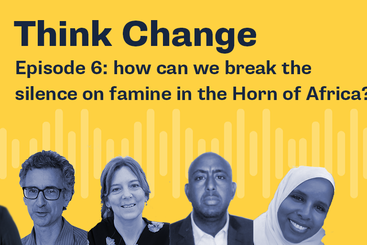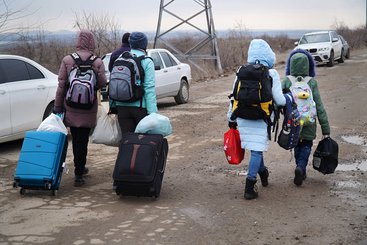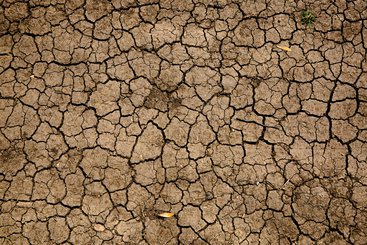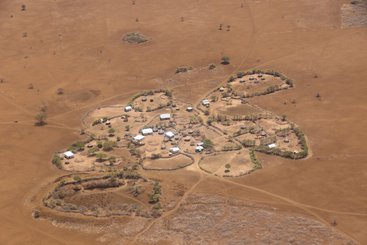It is possible that you don’t know how dire the humanitarian crisis in the Horn of Africa is right now, judging from the lack of attention it is getting both in the media and even in aid circles. But there are already reports of one person dying every 48 seconds in the Horn of Africa. When mortality rates are framed in the number of seconds between deaths, you know things are serious. And since the next rainy season isn’t due for months, it is inevitable that things will get worse, even if those rains are good. (The current forecast is that they won’t be.) Famine is already underway in some parts of Somalia.
🗣️ @nimoa_hassan of @NGOConsortium gave a stark illustration of the unfolding #HornOfAfricaCrisis in Somalia at our event on Tuesday.
— HPG (@hpg_odi) June 9, 2022
📺 Catch up with the full discussion now: https://t.co/wWFyJs2709 pic.twitter.com/j7M8nlb3dd
This should not be news. There were warnings that this situation was likely as early as 18 months ago. Frustratingly, we’ve also been here before. In 2010–2011, in spite of early warning signs that failed rains would lead to crisis, the humanitarian response was too little too late, and over 300,000 people died in the region. History almost repeated itself in 2016–2017, but donors and humanitarian organisations mobilised a response just soon enough to head-off mass mortality. (Let’s not congratulate ourselves too much on a rapid response: excess deaths in Somalia alone in 2017 are estimated at 45,000.) It is unfortunately too late to keep mortality down even to those levels this time, but hopefully not too late to prevent the number of deaths from reaching the high hundreds of thousands. However, this can only happen if the humanitarian community goes full speed and in a really targeted way. Sadly, though operations are scaling up, there are still no signs of all out acceleration.
The attention of the media, governments and even humanitarian organisations is mostly focused elsewhere: on the war in Ukraine. This has had a direct negative effect on funding and has limited the humanitarian response. At the end of April, the United Nations Office for the Coordination of Humanitarian Affairs (UN OCHA) and European Civil Protection and Humanitarian Aid Operations (ECHO) hosted a high-level roundtable in Geneva. Almost $1.4 billion were pledged for the Horn of Africa as a whole. However, it is not clear that those pledges are in fact new and additional money. Information we received, informally, put the ‘new money’ only at around $300 million. Those pledges need putting in context. In December last year, the needs for Somalia alone were estimated at $1.5 billion, and that was before the fourth rains failure earlier this year.
Is there really no new money for a crisis of this scale? Is it really impossible to find it in time? With enough political will, resources could be mobilised quickly. It took the World Bank less than two months to find and make available over $150 billion at the start of the Covid-19 pandemic. Although only around 20% of appeals to the Horn of Africa have been met, donors have poured over $1.6 billion into the humanitarian UN Ukraine Flash Appeal – over 70% of the appeal total. The UN Refugee Agency (UNHCR) has collected its highest ever amount of private donations. In the UK, the Disasters Emergency Committee (DEC) of non-governmental organisations (NGOs) has collected more donations for Ukraine and neighbouring countries than its nine previous appeals combined. Humanitarian organisations are also putting a huge amount of their time and other resources into rapidly mounting operations in Ukraine and the region. Yet, to date, there has been no such DEC appeal for the Horn of Africa. Why? Appeals cannot go ahead if it is judged that they would fail for lack of media and public interest.
Understandably, Western governments and populations are concerned about the situation in Ukraine. The way Europeans have opened up their doors to refugees, allowed them to work, and given them access to basic services and social protection through state systems is a model of how to manage a refugee crisis. In those mostly high-income European countries – and even in most of Ukraine – state systems function and, as we have written at the start of the crisis, priority should be given to sustaining those services. Ukraine and neighbouring countries are rightly receiving billions in budgetary and macro-economic support to do just that. International humanitarian aid is only appropriate where people cannot access those services, which in effect mostly means occupied or besieged areas of Ukraine.
Yet here we are: Ukraine is receiving more humanitarian aid than the millions of people at risk of famine across the Horn of Africa. Much has been written on the need to reform a humanitarian financing system that is not fit for purpose because it relies on a ‘begging bowl’ approach to funding crises that is unpredictable and results in support according to political priorities rather than need. It is hard to know how to defend the accusation that African lives simply matter less to those political priorities than Europeans lives do.
It is inevitable that Western politicians worry more about Ukraine than about a crisis that does not touch on the security of their own countries. It is also understandable that Western media pay more attention to a conflict in Europe with a clear and gripping narrative, rather than what can easily be seen as yet another drought in distant Africa.
It is harder to let humanitarian agencies and donors off the hook. They have signed up to the principle that humanitarian aid should be implemented ‘solely on the basis of need, without discriminating between … populations’ according to other criteria, and that it should be autonomous from ‘political, economic, military or other objectives’. Humanitarian agencies have no business in giving priority to what is interesting, what is easy, where they can get the most money, or what they feel close to. If the humanitarian system can’t give priority to the most vulnerable, can’t do basic triage, then it has failed in its mission.
Yes, humanitarian agencies should encourage the media to give at least more attention to what is happening in Ethiopia, Somalia and parts of Kenya right now. Yes, they should encourage politicians to make it a higher priority, and to get engaged. Yes, they should be asking them to push the World Bank and other international financial institutions to treat this crisis with the same urgency that they treated Covid.
But first they have to act themselves. Humanitarian agencies are the ones with an obligation to focus their time, effort and resources where they can save lives.
Very little humanitarian assistance to Ukraine, and even less to its neighbouring countries, is about saving lives. So, we must admit this unpalatable truth: the humanitarian system is letting people die in the Horn, in part because it is spending humanitarian resources in Ukraine and neighbouring countries, even where it struggles to use them well and where it is not appropriate, let alone a priority. Humanitarian agencies should make the case to their public and private donors to redirect resources from Ukraine to the famine in the Horn of Africa. We are not naïve. The humanitarian system has never been immune from politics. But a system that accepts being guided primarily by political and media attention has lost the sense of its raison d’être. Let’s face it – if the Horn of Africa in 2022 isn’t a humanitarian emergency, then what is?





